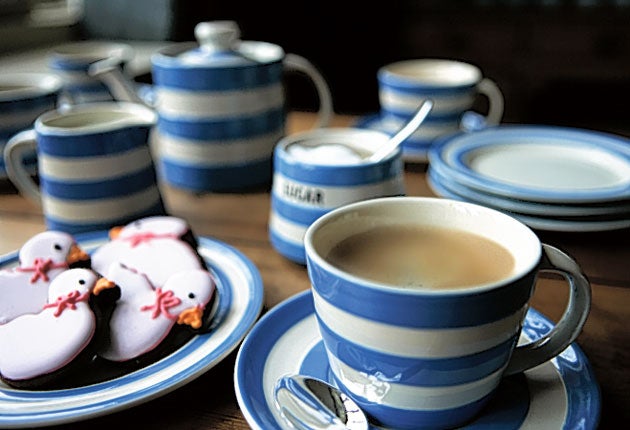The Secret History Of: Cornishware

Your support helps us to tell the story
From reproductive rights to climate change to Big Tech, The Independent is on the ground when the story is developing. Whether it's investigating the financials of Elon Musk's pro-Trump PAC or producing our latest documentary, 'The A Word', which shines a light on the American women fighting for reproductive rights, we know how important it is to parse out the facts from the messaging.
At such a critical moment in US history, we need reporters on the ground. Your donation allows us to keep sending journalists to speak to both sides of the story.
The Independent is trusted by Americans across the entire political spectrum. And unlike many other quality news outlets, we choose not to lock Americans out of our reporting and analysis with paywalls. We believe quality journalism should be available to everyone, paid for by those who can afford it.
Your support makes all the difference.You might not know its name but you would certainly recognise its distinctive blue and white stripes. Perhaps from your grandparent's kitchen, or some distant childhood memory.
Cornishware, as it is correctly known, has been in production since the 1920s when Tom G Green bought a pottery and started making breakfast ware. Now, there are collectors all over the world and rare and vintage pieces trade for hundreds of pounds.
The name came from a TG Green sales representative who said it reminded him of the blue skies and white crested waves of Cornwall. It was also made from Cornish clay which was transported to the factory in the Potteries in Stoke on Trent. The rationale being that it was cheaper to take the clay from Cornwall to the coal-fired kilns of the Midlands rather than the other way round.
Swearing Tom, as he was known, fell into the pottery business by accident. Fleeing to Australia with a broken heart, he made his fortune putting up telegraph poles for the burgeoning telecommunications industry until one day he heard that the woman he had never stopped loving (Mary Tenniel, the sister of Sir John, illustrator of Alice in Wonderland) was, in fact, keen to see him again. So he hotfooted it back to England and married her, presumably before she changed her mind again.
On honeymoon in Scarborough, he met a potter who was selling his business and, making yet another hasty decision, he decided to buy it and learn the trade. And the rest, as they say, is history.
Speaking in 2009, Derek Green, Tom's great-grandson, said it was always a family business: "There was never any question that we would all work there as it was our business, but in addition to that we often had generations of employees there too – husband, wife and children. Tom never sacked anyone either."
For the first 40 years, the shape of Cornishware hardly changed at all, but in 1964, a young designer called Judith Onions was brought in to modernise the shapes and change the logo on the bottom and the range continued to sell well. "It wasn't necessarily our best seller but it was the most consistent. It was a staple product," Derek recalled. "The factory made a huge range of tableware but Cornishware is timeless."
Sadly, the crash of 2007 did for TG Greens, and the factory closed down although, while production ceased, a series of passionate collectors continued to trade among themselves with some of the pieces selling for over £150 online. But it wasn't down for long. The company was bought a few months later and relaunched last year. So the familiar blue and white hoops are once again rolling off the production lines and from next month, you will be able to buy it in red for the first time (Tggreen.co.uk).
Join our commenting forum
Join thought-provoking conversations, follow other Independent readers and see their replies
Comments